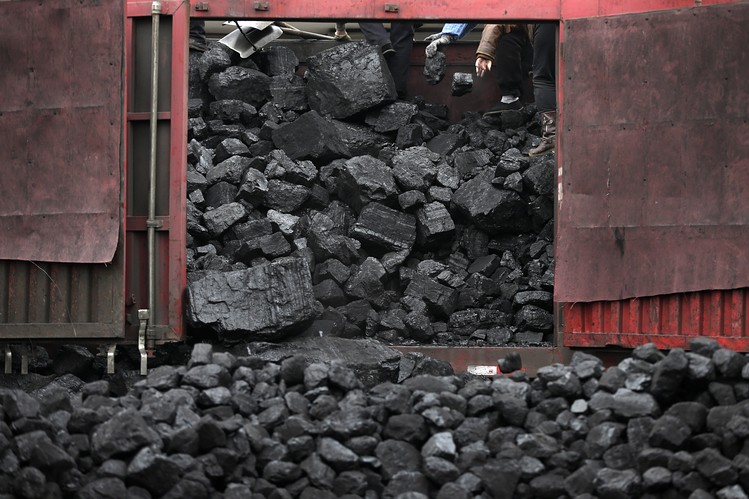China is by far the world’s largest consumer of coal, using more of the fossil fuel than the rest of the world combined. While coal has done much to meet increasing energy demands amid China’s rapid economic growth, it has brought with it substantial human and environmental costs. The joint U.S.-China commitment on carbon emission reductions last month signaled China’s willingness to begin weaning away from coal power, but economic reliance on the natural resource has some in coal country worried about the cost of phasing coal out. While public pollution concerns and bilateral pledges force change in China’s energy strategy, decades of coal reliance have caused a surge in pneumoconiosis, a disease also known as “black lung,” which is expected to outlive the nation’s coal addiction. For the Wall Street Journal, Chuin-Wei Yep reports on the disease’s prevalence in China, and tells the story of a coal miner’s battle:
China’s struggle with black lung is likely to outlast its addiction to coal. China last month made a commitment to start reducing its annual volume of coal usage by 2030. That turning point—called “peak coal”—could occur years before that as this country cleans up its degraded environment.
China’s diagnoses of pneumoconiosis have risen sevenfold from 2005 to 2013 to about 750,000, at an average pace of 35% annually, according to official data.
That is likely to be an underestimate. Watchdog groups say 90% of China’s coal miners lack labor contracts and so don’t qualify for inclusion in official health surveys. That would indicate that black-lung sufferers number closer to six million, said Wang Keqin, founder of Love Save Pneumoconiosis. Hong Kong-based watchdog China Labour Bulletin agrees with the estimate.
[…] Mr. Ruan knew about black lung before he developed symptoms. A 30-year-old cousin, Zuo Shunyou, started work at the Shiqiao coal mine two years before Mr. Ruan. In 2010, after recurring fevers and breathing trouble, Mr. Zuo sought help.Doctors at Guiyang Pulmonary Hospital suspected black lung from the tissue scarring found in an X-ray scan. But they wrote a question mark on his diagnosis because further tests were needed; Mr. Zuo said he didn’t have the 13,000 yuan for the additional tests, and, he said, the mine’s owners wouldn’t pay. Mr. Ruan calls coal mining “the hardest job.” At Shiqiao, coaling went around the clock in three shifts, seven days a week. He and his colleagues dug up more than 400 tons of coal a day. […] [Source]
Also see a separate, infographic-rich Wall Street Journal report on pneumoconiosis in China from Chuin-Wei Yap.
At Deutsche Welle, Hans Spross reports on the long road that lies ahead of China in trying to shake its coal reliance, noting optimism from Greepeace East Asia’s Li Shuo:
What matters is how fast and how comprehensively China can become independent of coal. Even Germany, which sees itself as a leader of the green energy revolution, is making this transition only slowly.
At present, China produces about 75 percent of its electricity from coal. In Germany, the figure is 44 percent. China faces the bigger technical challenge, since its total energy demand is greater and still growing fast – its demand for electricity is expected to grow by over 70 percent by 2035.
It’s an open question as to whether China can break the link between economic growth and consumption of coal – and thus carbon dioxide emissions.
[…] But Li Shuo, a climate and energy campaigner at Greenpeace East Asia, is optimistic that this is possible. “In the first three quarters of 2014, China experienced a decline in coal consumption by 1-2 percent, while economic growth was still at around 7 percent,” Li told Deutsche Welle. For the first time, coal consumption has declined in absolute terms, he said.
And while this is not an energy transition on the German model, it could the “be the beginning of an ambitious turnaround,” Li said, calling the next Five-Year Plan, from 2016 to 2020, “absolutely critical.” […] [Source]
Meanwhile, China Daily ran a English-language article quoting Gregory Boyce—CEO of Peabody Energy, the world’s largest private coal company—as he predicts coal’s lasting dominance in China.







